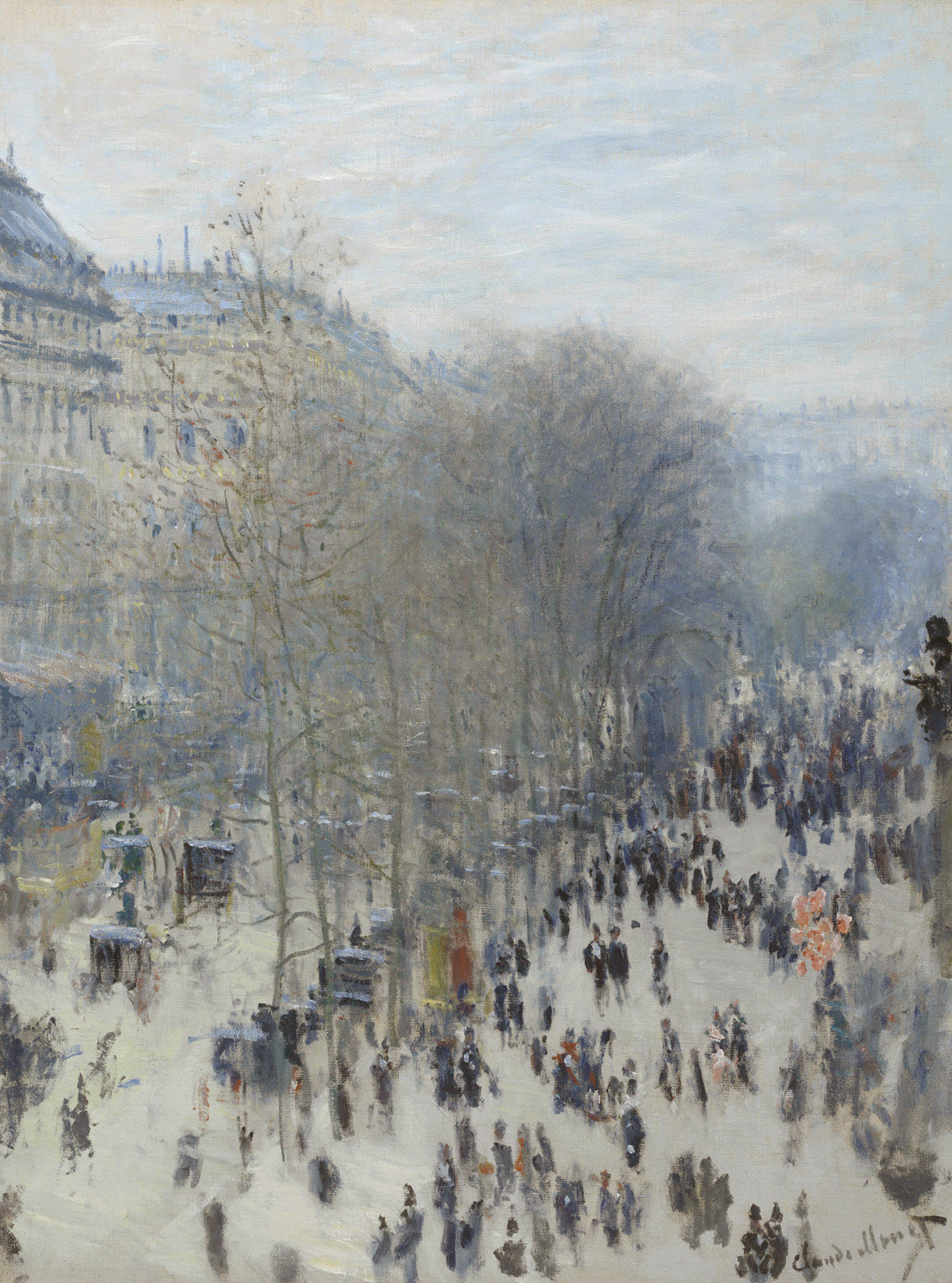Boulevard des Capucines, painted in 1873 by impressionist artist Claude Monet, is an incredible representation of Parisian life at the time. The painting depicts a busy boulevard in the winter afternoon, with horse-drawn carriages as the only mode of transportation. The colors mainly consist of blues, greens and grays which creates a cold and monochromatic view but subdued yellow background that makes it look like winter layover. Monet skillfully captures movement through impressionistic brush strokes.The blurriness of the people shows motion while standing-still people are sharper and separate from their surroundings.
One important aspect to note about Boulevard des Capucines is its historical significance. It was exhibited in the first Impressionist exhibition in April 1874 and played a crucial role in promoting the work of this dynamic art movement. Furthermore, this painting has given its name to one of Paris’s most famous streets because it is a visual representation of what Boulevard des Capucines looked like during Monet’s time.
Overall, Boulevard des Capucines provides us with insight into French society at the time while also showcasing Monet’s excellent impressionistic style.It represents an era where industrialization started taking over traditional ways; more horses on boulevards will soon be replaced by automobiles. This painting remains an essential part of art history as it serves as one of Impressionism’s most iconic artwork reflecting Movement within stillness.























